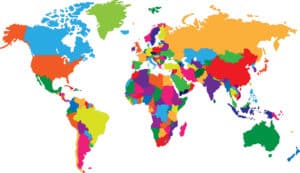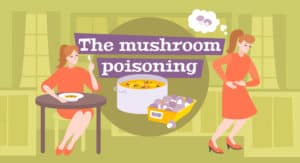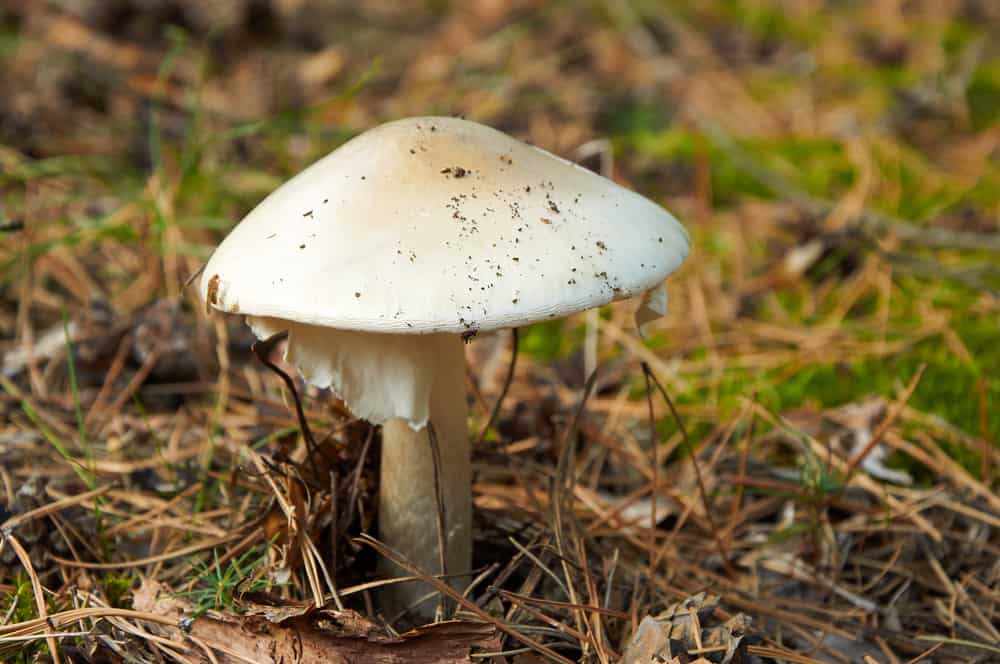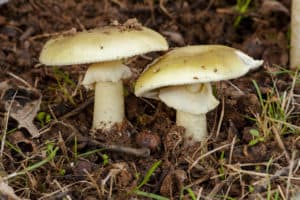The Spread of the Death Cap: Why You Need to Learn This Mushroom!
Once only found in Europe, this opportunistic and very deadly mushroom now grows around the world. Transported inadvertently in mulch, bark, and trees around the globe, the death cap (Amanita phalloides) is now widely distributed, and the number one cause of mushroom-induced fatalities.
Foragers and non-foragers must learn this mushroom. The death cap grows in urban and rural areas alike. Landscaped places are especially susceptible to these fungi.
Is death cap the most poisonous mushroom?
Yes, as far as we know. It causes the most fatal mushroom poisonings in the world. In North America, at least one person each year dies from ingesting this mushroom, and many more require lengthy hospital stays and organ transplants. The fatality rate is around 15%.
What does a death cap mushroom look like?
This mushroom is large, which is one of the many reasons people are drawn to it. The cap is pale buff, yellowish, or light olive and ranges from 2-6” across. At first, the cap is egg-shaped, but as it matures, it flattens out.
The cap flesh is white, and the gills are white, detached from the stem, and crowded. The stem is 3-6” long, white, and features grayish-green scales up and down it. At the base of the stem is a volva or cup-shaped sack from which the mushroom sprouted.
The volva is often hidden beneath leaf litter or soil and may need to be dug out to identify this mushroom positively.
Just below the cap is a ragged membrane ring, called the annulus. It looks like a white skirt around the stem. When young, it smells lightly sweet.
As it ages, the smell intensifies and becomes overpowering. Death caps grow singularly or in groupings, sometimes with 10 or more together.
A significant feature of the death cap is that the surface of the cap peels off easily, especially when wet. There is a myth of unknown origin that any mushroom that is easily peeled is edible.
This couldn’t be further from the truth, as evidenced by the death cap. Never, ever, ever, take to heart any quick and easy mushroom foraging tricks! It will lead to an unpleasant stay at the local hospital, or worse.

Where does the death cap mushroom grow?
Death caps grow all over Europe, North America, parts of Africa, Australia, New Zealand, Russia, parts of South America, and the Middle East.
Its range only seems to be expanding, especially as the commerce of wood, trees, mulch, and bark grows between countries.
The death cap grows in relationship with certain types of trees, although it doesn’t have a strong preference worldwide for one kind. Instead, it adapts and forms regional associations.
In the eastern United States, it prefers pine trees.
Across the western coast of the United States, it grows alongside coastal live oaks as well as some pines.
An invasive mushroom, the death cap isn’t limited by regional specifications or dependence on certain trees.
In addition to the trees noted above, death caps are also found fruiting around birches, beeches, chestnuts, horse-chestnuts, filberts, spruces, and horn-beams.
What time of year does the death cap grow?
This depends entirely on where you live. In temperate climates, they grow year-round. Death cap growth is generally spurred by heavy rains, though that is not always the case.
Can you touch a death cap mushroom?
The toxins aren’t likely to absorb through your skin, although experts aren’t entirely certain of this.
The real danger of touching a death cap is when a person inadvertently touches their face, nose, or mouth afterward, transferring the toxin.
It is best to exercise extreme caution and wash hands thoroughly after touching a death cap.

What happens if you eat a death cap mushroom?
The death cap mushroom contains a-amanitin, a deadly toxin. This toxin attacks the liver and kidneys, potentially causing failure of one or both, and eventually, death.
Symptoms may occur after a few hours or a few days. Recovery is especially difficult if symptoms don’t appear for a few days as the damage is sometimes irreversible at this point.
Poisoning symptoms start as gastrointestinal issues and include diarrhea, vomiting, and nausea. After a few days, these symptoms clear up.
Then comes delirium, seizures, coma, liver failure, kidney failure, and eventually, intracranial bleeding and cardiac arrest.
Can you survive eating a death cap?
Yes. If medical treatment is received quickly enough, most people do survive this poisoning. Liver transplants are sometimes needed, though.
The majority of survivors received medical care within 36 hours of ingesting the mushroom.
How much death cap will kill you?
Ingesting as little as one half of one mushroom (1.1oz) is enough to kill an adult human.
Is there a cure for poisoning by death cap mushroom?
Medical treatment does save most people from dying from death cap ingestion. There isn’t a magical cure, though.
Current treatments include high doses of penicillin, supportive care, and liver or kidney transplants if needed.
In Europe, an injection of silibinin, a derivative of milk thistle, is an approved treatment. Silibinin prevents liver cells from absorbing the toxin.
Studies in the United States are still being done, and it is not approved here yet.
Why are there so many poisonings from the death cap mushroom?
The most common reason is that it is mistaken for another mushroom. Young death caps have been confused with small puffballs and other edible members of the Amanita family. In Europe, it is confused with similar-looking Russulas.
Accidental ingestion by children who find it near their home is becoming more common as the death cap expands its range. Patches or lengths of grass around sidewalks in urban areas are common locations to find death caps, in some areas.
Keep an eye out for this nefarious invader. It looks harmless enough, a large white mushroom, not all that different from a supermarket mushroom to the untrained eye. It has no loud colors clearly announcing it’s toxicity, as it incorporates itself into all parts of the globe.





